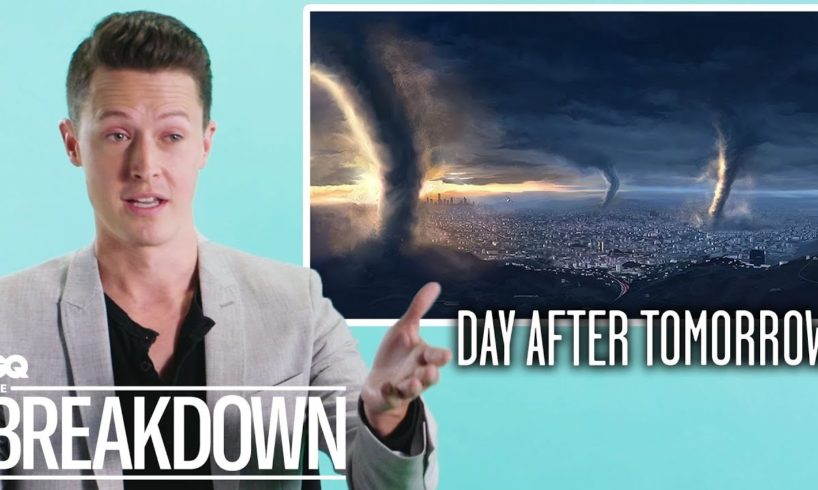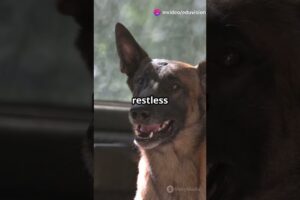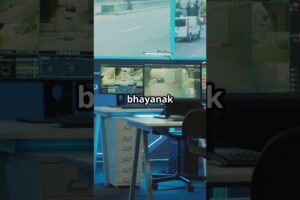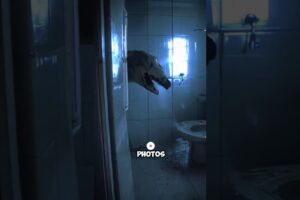
Meteorologist David Yeomans breaks down natural disaster scenes from movies and television, including ‘Mad Max: Fury Road,’ ‘The Day After Tomorrow,’ ‘The Crown,’ ‘Only the Brave,’ ‘Twister,’ ‘The Wolf of Wall Street,’ ‘War of the Worlds,’ ‘The Impossible,’ ‘Dante’s Peak’ and ‘Everest.’
Follow David on Social:
IG: @DavidYeomansWeather
FB: https://www.facebook.com/DavidYeomansWX
Bio: https://www.kxan.com/author/david-yeomans/
Still haven’t subscribed to GQ on YouTube? ►► http://bit.ly/2iij5wt
Subscribe to GQ magazine and get rare swag: https://bit.ly/2xNBH3i
ABOUT GQ
For more than 50 years, GQ has been the premier men’s magazine, providing definitive coverage of style, culture, politics and more. In that tradition, GQ’s video channel covers every part of a man’s life, from entertainment and sports to fashion and grooming advice. So join celebrities from 2 Chainz, Stephen Curry and Channing Tatum to Amy Schumer, Kendall Jenner and Kate Upton for a look at the best in pop culture. Welcome to the modern man’s guide to style advice, dating tips, celebrity videos, music, sports and more.
https://www.youtube.com/user/GQVideos
Meteorologist Breaks Down Natural Disasters in Movies & TV | GQ
source







Dude you must see Geostorm
Theres quite a lot to talk about
Lol cause I'm worried about the speed limit when trying to out drive a tornado?
I heard a cyclone before it sounded like a whistle, screeching mad woman and trumpet in one.
David is the chief meteorologist at KXAN TV in Austin, TX. He replaced a guy, Jim Spencer, who recently retired after a long and very distinguished career. David is absolutely the right man for that job. Very smart and a very good communicator.
Ok, I have 4 corrections:
1. A rogue wave is technically any wave GREATER than twice the surrounding highest average. 2 waves combining is a frequent occurrence.
2. A tsunami is NOT an undersea earthquake. Yes, that can cause a tsunami, but so can a landslide or meteorite.
3. The Tsunami Warning Center is located in Hawaii and uses an intricate buoy system to determine the presence of tsunami. In 2004, the Indian Ocean had no system, and no contact chain in place. The TWC attempted to warn impacted countries, but wasn’t prepared for the event, where it occurred.
4. Tsunami aren’t up to 100ft high… but thousands. In Lituya Bay, AK, 1958, a landslide caused the largest ‘known’ tsunami of 1720 run-up, (or the greatest Height of impact). It happened after USGS was already there to investigate the unusual tree line, caused by a previous tsunami.
Ok but isnt the point of the movie "Day After Tomorrow" unnatural natural disasters
He's got the perfect weatherman voice.
I thought a meteorologist studied space…I’m not very smart
How does he make weather so interesting
So no 2012?? Still a great video learn so much
Insider ripoff, and not even rate the movie
As they say in Hollywood, never let facts or science get in the way of a good story.
Dang this guy is like a tsunami, it can destroy everyone lol
This guy gives me the Pokémon guru vibes
He says it is rare to have more than three tornadoes around at the same time. One time back in the 1980s, I saw about 10-12 small, rope-like tornadoes moving around one another. Some would dissipate but then others would form. I was standing with my parents at the edge of the field watching these small tornadoes happen between our farm and our neighbor's farm a mile away. My parents kept looking up to make sure no tornadoes were forming above us. It was surreal. Light winds, no rain where we stood.
The Day After Tomorrow was so stupid, that I did not know if I should laugh or cry (I'm a geologist).
He did a great job, with two exceptions that I noticed. He referred to making the electrical charge in a cloud "happy". I realize he's trying to dumb it down, but I think we could handle the word equalize!
He said we don't have weather stations at sea. NOAA, to name one agency, will be very disappointed to hear this! They have many sophisticated buoys positioned around the world, that do nothing but record weather conditions, wave heights & directions and water temperature.
Rip to Tim Samaris and his team who died in the 2013 El Reno tornado he was referencing at 17:30
he has like a new anchor's voice/vibe and way of talking
I always thought cyclones and hurricanes were the same thing just named different in different parts of the world, well you learn something new everyday
Dantes peak could've had a couple more scenes covered, the lave going down the mountain, the bridge scene, and the boat scene.
??✅✅
Twister was my favorite tornado movie in general
Sorry but god he’s so good and adorable at the same time